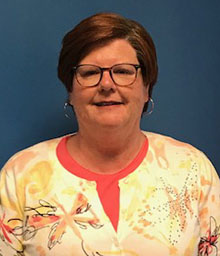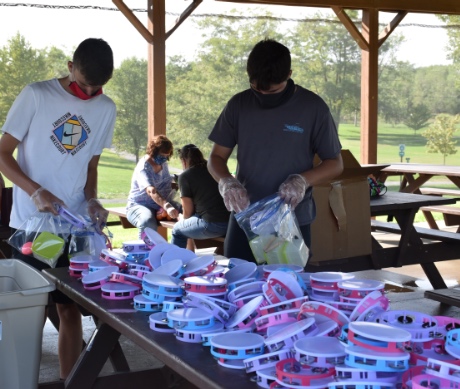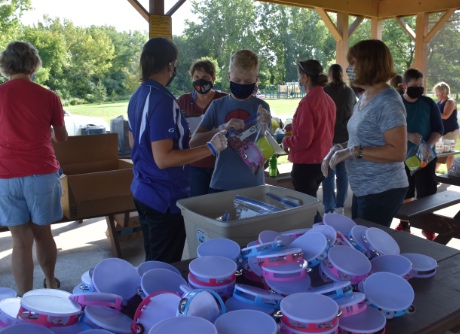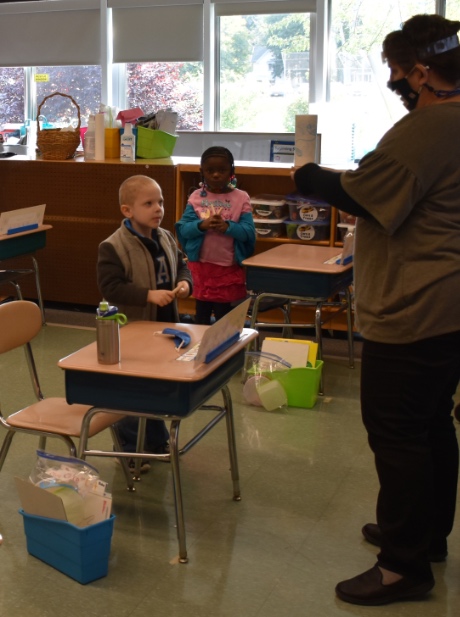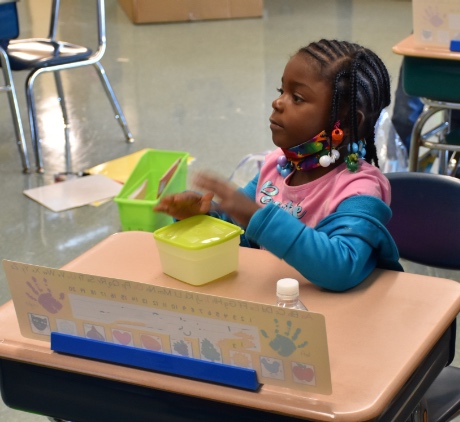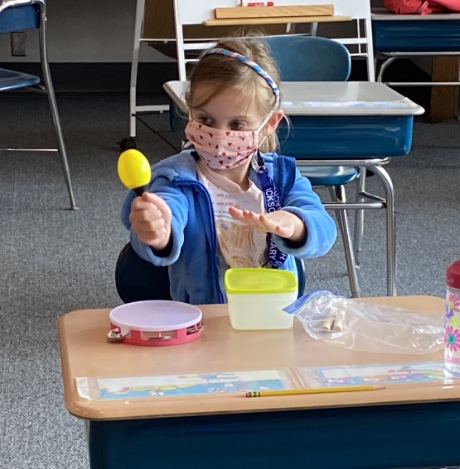Batavia City School administrators emphasized average class size, non-mandated programs and the property tax rate in making their final presentation of a $51.4 million 2020-21 spending plan to the public at tonight’s board of education budget hearing and meeting on the district’s YouTube channel.
Superintendent Anibal Soler Jr. and Business Administrator Scott Rozanski utilized PowerPoint slides during their 30-minute overview, touching upon several metrics, including the budget process, enrollment, demographics, employee structure, outcomes, program offerings, finances, tax implications and voting details.
BUDGET PROCESS
The district was facing a $1.9 million budget shortfall on March 31, Soler said, even before the economy felt the full effects of the COVID-19 pandemic that had forced the closing of school in mid-March. Since then, teachers and students have been interacting on a remote learning basis.
“The current fiscal challenge … was already going to be there even if COVID happened or didn’t happen,” he said. “We were going to have some tough decisions to be made as an institution.”
Batavia’s student count has dropped by 100 over the past seven years, Soler said, noting that enrollment dictates staffing levels, student-teacher ratios and the amount of state aid the district receives. He also said that state aid has been flat during that time while contractual obligations have increased.
The board adopted the budget on May 19 (almost three months after the process started), achieving its goal of formulating a budget with no increase in property taxes to homeowners.
The proposed budget includes one new item -- a $100,000 capital outlay project to install security door upgrades and landscaping at the Middle School.
ENROLLMENT AND DEMOGRAPHICS
As the school year ends, the district’s K-12 enrollment is at 2,284, with 358 in K-1, 492 in grades 2-4, 705 in grades 5-8, 641 in grades 9-12 and 88 in K-12 out-of-district placements. Another 112 were enrolled in Universal Pre-Kindergarten to raise the total to 2,396.
The average class size, which Soler said was “pretty phenomenal,” is 18 for UPK, 20 for grades 2-4, 20 for grades 5-8, and 22 for grades 9-12.
He said that 62.8 percent of the students are eligible for free or reduced lunch.
Seventy-two percent of the students are white, 13 percent black or African-American, and 9 percent are Hispanic or Latino, and the average daily attendance is 92 percent, Soler said.
EMPLOYEE STRUCTURE
Without specifically mentioning the nearly 30 jobs that were terminated or abolished to balance the budget, Soler provided an update on staffing on a full-time equivalent level.
The district employs 245.9 (FTE) teachers, plus 121 teacher aides/clerical staff, 37 maintenance staff (including a School Resource Officer), 24 nutritional services staff, six assistant principals (two each at the high school and middle school), four principals, five administrators and five information technology staff.
Soler said the student to teacher ratio last school year was about 8.2 to 1.
OUTCOMES
“At the end of the day, we’re measured by our outcomes. We’re expected to graduate kids, get them ready for college and career or the world,” Soler said.
The Batavia graduation rate of 92 percent is 9 percentage points higher than the New York State average, Soler said.
However, the district’s state English Language Arts and Math proficiency rates for grades three through eight of 38 percent and 43 percent, respectively, were slightly below the county average of 41 percent and 47 percent, respectively.
“If you look at similar size small city school districts, our rankings are usually in the top five or six …,” he said. “We are a pretty high performing school district in comparison to where we’re supposed to be.”
PROGRAM OFFERINGS
Soler said that two dozen programs that aren’t required by New York State are in the Batavia budget because they are “important to this board of education (and) important to this community.”
Those non-mandated offerings include full-day UPK, kindergarten, transportation, art/music/plays/musicals, counselors/social worker, advanced placement courses, sports, teaching aides and a school resource officer agreement with the Batavia City Police Department.
“(There are) no compromises in anything that we’re offering in either extracurricular or athletics,” he said.
SPENDING PER PUPIL
The district’s expenditures per pupil were broken into three categories – general education, special education and total.
Batavia spends $11,655 per general education student, about $2,000 less that the New York State average, and $33,848 per special education student, about $1,500 more than the state average.
Overall, the total expenditure per pupil at Batavia is $20,892, about $4,000 less than the state average, Soler said.
FINANCES & TAX IMPLICATIONS
Rozanski reported the $51.4 million budget is an increase of $952,000 (1.8 percent) over last year, but the tax levy of $19.5 million is a decrease of $7,362 (0.038 percent).
“For comparison, the CPI or Consumer Price Index is 1.81 percent,” Rozanski said.
Speaking about the state tax cap, he said it fluctuates from year to year, with the district’s 2020-21 tax cap number at negative 0.038 percent.
The district’s nine-year average tax cap allowable increase is 3.51 percent, Rozanski pointed out, but the actual nine-year average tax levy increase is only 1.03 percent – or 2.48 percent less than the average allowed.
“That translates to 71 percent less than what the district could have taxed the taxpayers or about $455,744 more per year on average,” he said. “Over that nine-year period, over $4 million more could have been collected by the district.”
Using current assessed property values from Genesee County, the projected school tax rate will decrease by 26 cents in 2020-21 to $21.30 per thousand of assessed value, Rozanski reported. That figure – and it could change -- is $3 less than the tax rate from 2006-07.
Rozanski said that over the past six years, district residents have received $4.6 million in rebate checks from New York State (as a result of the district’s compliance with the tax cap) while paying $1.36 million in school taxes – “for a net positive to the community of $3.2 million.”
The state will not be offering rebate checks this year … “and probably won’t be anytime soon,” he said.
RESERVES & REVENUE SOURCES
Rozanski said the appropriated fund balance (non-reserves) will decrease by $250,000 to $1.75 million while the appropriated fund balance (reserves) will decrease by $132,143 to $975,146 per the 2020-21 budget.
“(The $250,000) is the surplus in this year’s (2019-20) budget, Rozanski said. “That’s how much we projected to be available as of June 30th to offset next year’s (budget).”
The district is anticipating $27.1 million in state and federal aid for 2020-21, which represents 52.6 percent of its revenue, while taxes will bring in another $19.5 million or 38 percent, Rozanski said. Support from the state is unclear, though, due to revenue losses caused by the coronavirus.
As far as appropriations, about $30 million (57.5 percent) will go to instructional support (payroll), $11 million (21 percent) to employee benefits, and $5.6 million (11 percent) to general support (administration, buildings and grounds). Remaining costs are transportation, debt service and interfund transfers.
VOTING DETAILS
By executive order of the governor, voting will be done by absentee ballot only. Ballots were mailed to district residents and must be received by personnel in the district’s administrative offices at 260 State St. by 5 p.m. June 9 to be considered.
Rozanski recommended that residents mail them back in the postage-paid envelope on or before June 5.
Beside the budget, residents will vote on a referendum for a $619,151 capital project at Jackson Primary School. The money will be taken from the Capital Reserve fund for restroom renovation and an age-appropriate playground.
“This will not impact the tax levy at all as it is coming from our reserve fund,” Rozanski advised. “Our net cost will be about 10 percent ($60,000) when we get aid on that and the rest will go back into the reserve fund.”
Three incumbent board members are running for the three open positions. They are Alice Ann Benedict, Barbara Bowman and Tanni Bromley.
LOOKING AHEAD
Soler said plans for an outdoor commencement ceremony at Van Detta Stadium on June 27 are still on the table, with a meeting with Genesee County Health Department officials scheduled for this Thursday.
June 17 is the last day of remote learning for students and teachers and June 26 is the last day of breakfast and lunch meal distribution.
The superintendent said that he will be forming a “reopening task force” to look at three options for this fall – traditional classroom setting with social distancing, a hybrid model of traditional and distance learning, and exclusively remote learning.
“We have to thank about what this will look like, the implications,” he said, adding that he expects to receive guidance from state leaders within a week or so and have plans in place by July.
